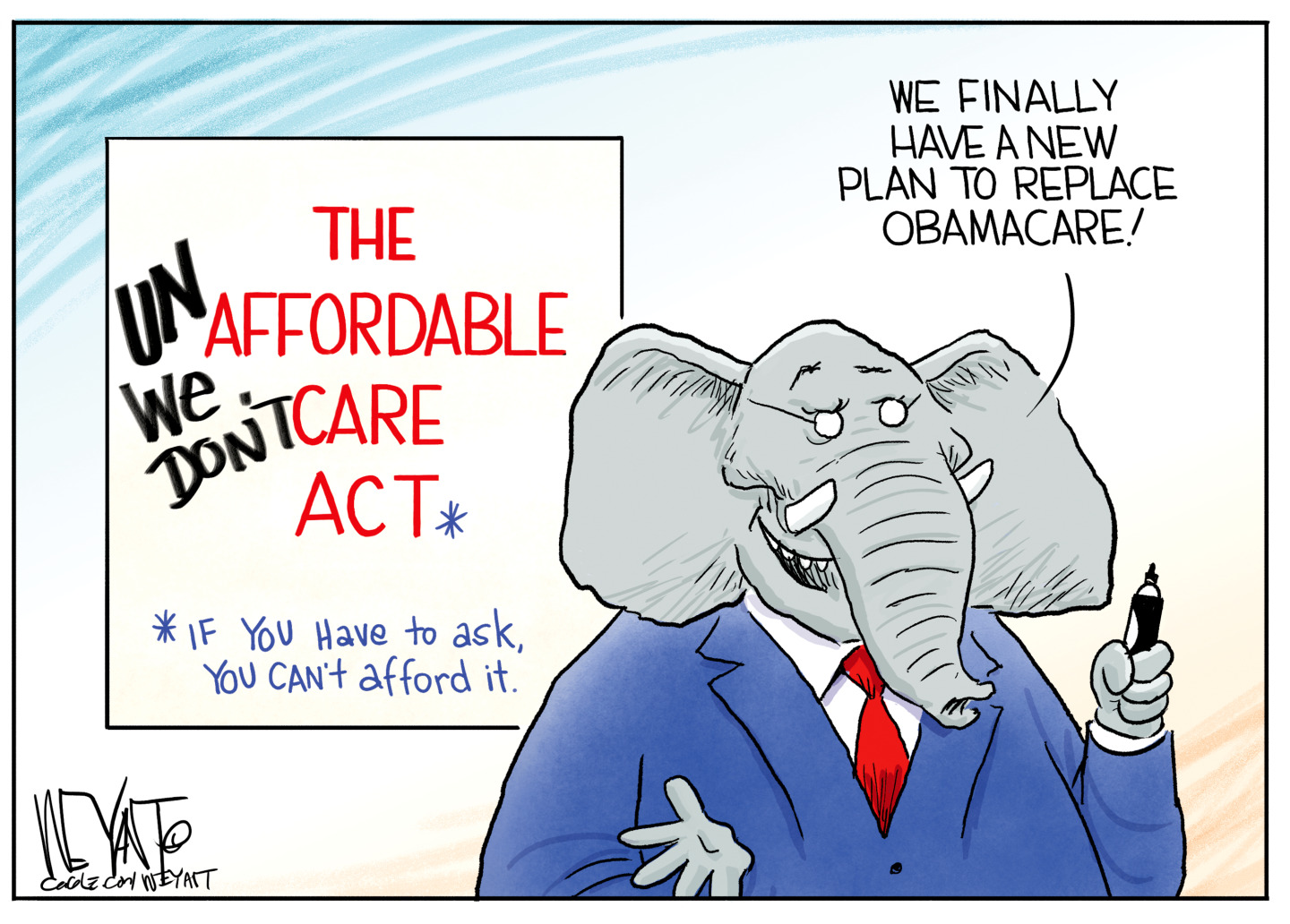Why ObamaCare is working great — in Kentucky
The states enjoy advantages that the federal government does not

As you've probably read, the rollout of ObamaCare has been pretty rough. Its main hub, Healthcare.gov, is plagued by glitches and has effectively been decommissioned until the IT cavalry comes to the rescue.
But that hasn't been the case everywhere. Kentucky's health-insurance exchange, Kynect, has been lauded as one of ObamaCare's greatest success stories. The state has enrolled 26,174 people — more than any other state except New York, Washington, and California — despite its relatively small population.
Those other states, by the way, also run their own health-insurance exchanges. While California's website, Covered California, has experienced a few problems, New York and Washington state's state-run exchanges have been, by most accounts, operating smoothly.
The Week
Escape your echo chamber. Get the facts behind the news, plus analysis from multiple perspectives.

Sign up for The Week's Free Newsletters
From our morning news briefing to a weekly Good News Newsletter, get the best of The Week delivered directly to your inbox.
From our morning news briefing to a weekly Good News Newsletter, get the best of The Week delivered directly to your inbox.
"On balance," Daniel N. Mendelson, chief executive of Avalere Health, told The New York Times, "the state exchanges are doing better than the federal exchange."
So how did Kentucky succeed where the federal government failed so miserably?
Allowing consumers to shop around
Healthcare.gov won't let you compare health insurance plans without creating an online account first. It's supposedly set up that way to encourage people to sign up, though cynics say it's meant to prevent certain first-time enrollees — like young, healthy males — from coming down with a case of sticker shock.
A free daily email with the biggest news stories of the day – and the best features from TheWeek.com
But Kentucky Gov. Steve Beshear (D) thinks it discourages users from cottoning to ObamaCare.
He explained to Talking Points Memo why the ability to browse before signing up is so important:
What we've found in Kentucky when we started talking with people was that there was a huge amount of misinformation and misunderstanding. People were very confused. What I've been telling them is: Look, you don't have to like the president, and you don't have to like me. It's not about the president and it's not about me. It's about you, it's about your family, it's about your children.
So do me a favor. It won't cost you a dime to go on that website and just find out what you might qualify for. I'll guarantee you you're going to like what you find, and that's what's been happening. [TPM]
Tailoring the experience
States running their own exchanges had the luxury of creating an experience that meets their residents' needs. Kynect's website, for example, is less slick than Healthcare.gov, but it's also a lot more straightforward and simple. That, according to Kynect spokesperson Gwenda Bond, was meant to make it more accessible to people who might not have broadband or much experience with computers.
The federal government's one-size-fits-all strategy, meanwhile, treats largely rural Alaska the same way it does suburban New Jersey. That's why it would have been preferable for every state to design their own exchanges, but with Republican-controlled states backing out, it was left to the federal government to step in.
Testing the dang thing
Kentucky has been testing Kynect regularly since July, claimed the site's executive director, Carrie Banahan. Compare that to Healthcare.gov, which, accordng to the executives involved, was tested for a grand total of two weeks before it was made public.
Even more mind-blowing: By Sept. 26, there had been no "end-to-end" testing of the system. That means nobody, according to The Washington Post, had tried to sign on to Healthcare.gov, browse through the insurance plans, and pick one of them — less than a week before thousands of Americans would try and do just that.
Thinking like a start-up
Silicon Valley is built on the idea that small, nimble organizations can innovate more easily than large bureaucracies. The federal government is, of course, the ultimate bureaucracy. That could be one of the major reasons that Healthcare.gov's development moved at a snail's pace.
CGI Federal, one of the two biggest contractors involved with building the site, was awarded its contract in December 2011. The government was so slow in getting the company specifications, according to the New York Times, that it didn't start working on the site until this spring.
Not that you can compare the state of Kentucky to a start-up. But individual states "are more adaptable," Alan R. Weil, executive director of the National Academy for State Health Policy, told The New York Times, meaning they "can respond more quickly to solve problems as they arise."
Kynect hired software developers in Oct. 2012; development started in January 2013. That is way faster than the White House was able to move.
Keith Wagstaff is a staff writer at TheWeek.com covering politics and current events. He has previously written for such publications as TIME, Details, VICE, and the Village Voice.
-
 A luxury walking tour in Western Australia
A luxury walking tour in Western AustraliaThe Week Recommends Walk through an ‘ancient forest’ and listen to the ‘gentle hushing’ of the upper canopy
-
 What Nick Fuentes and the Groypers want
What Nick Fuentes and the Groypers wantThe Explainer White supremacism has a new face in the US: a clean-cut 27-year-old with a vast social media following
-
 5 highly amusing cartoons about rising health insurance premiums
5 highly amusing cartoons about rising health insurance premiumsCartoon Artists take on the ACA, Christmas road hazards, and more